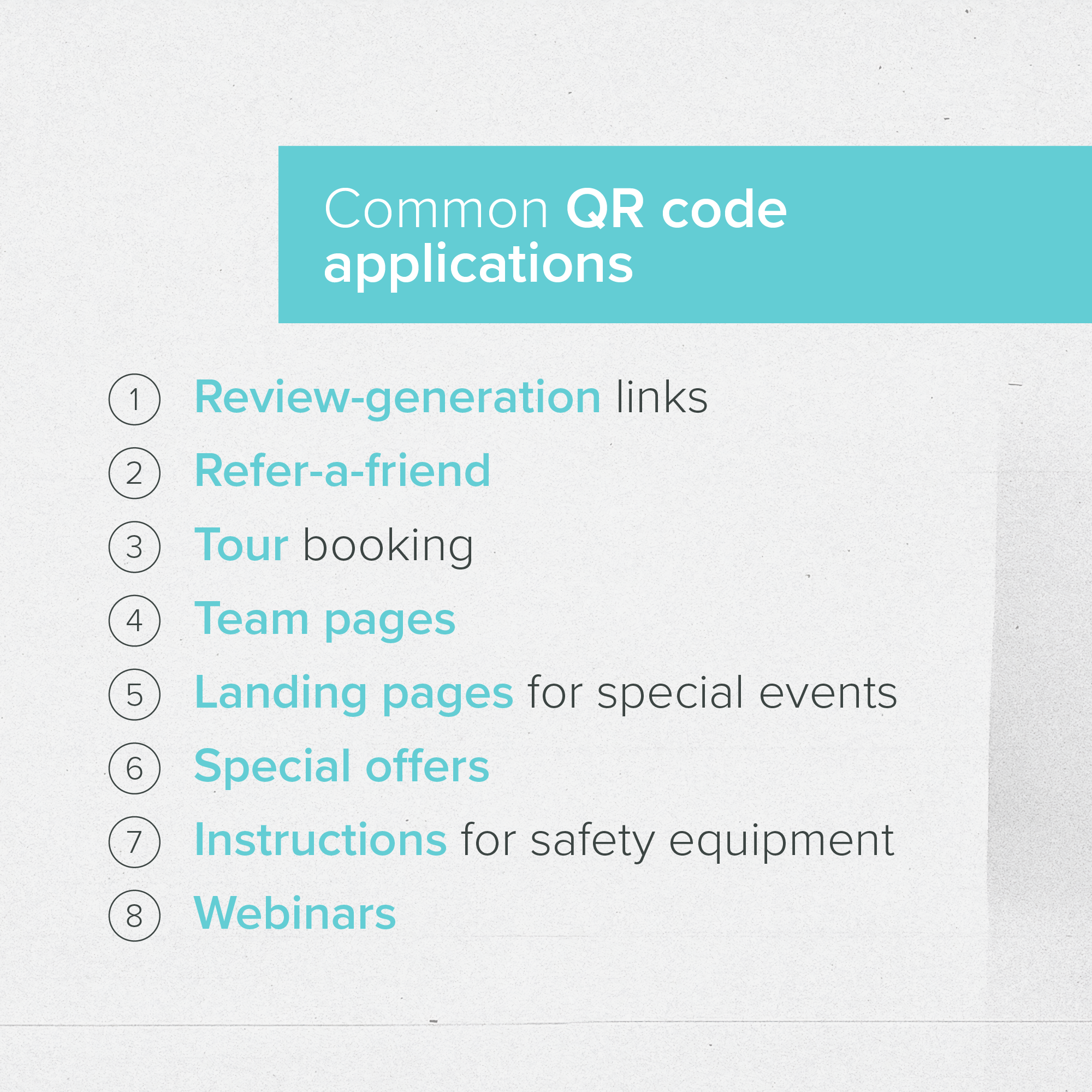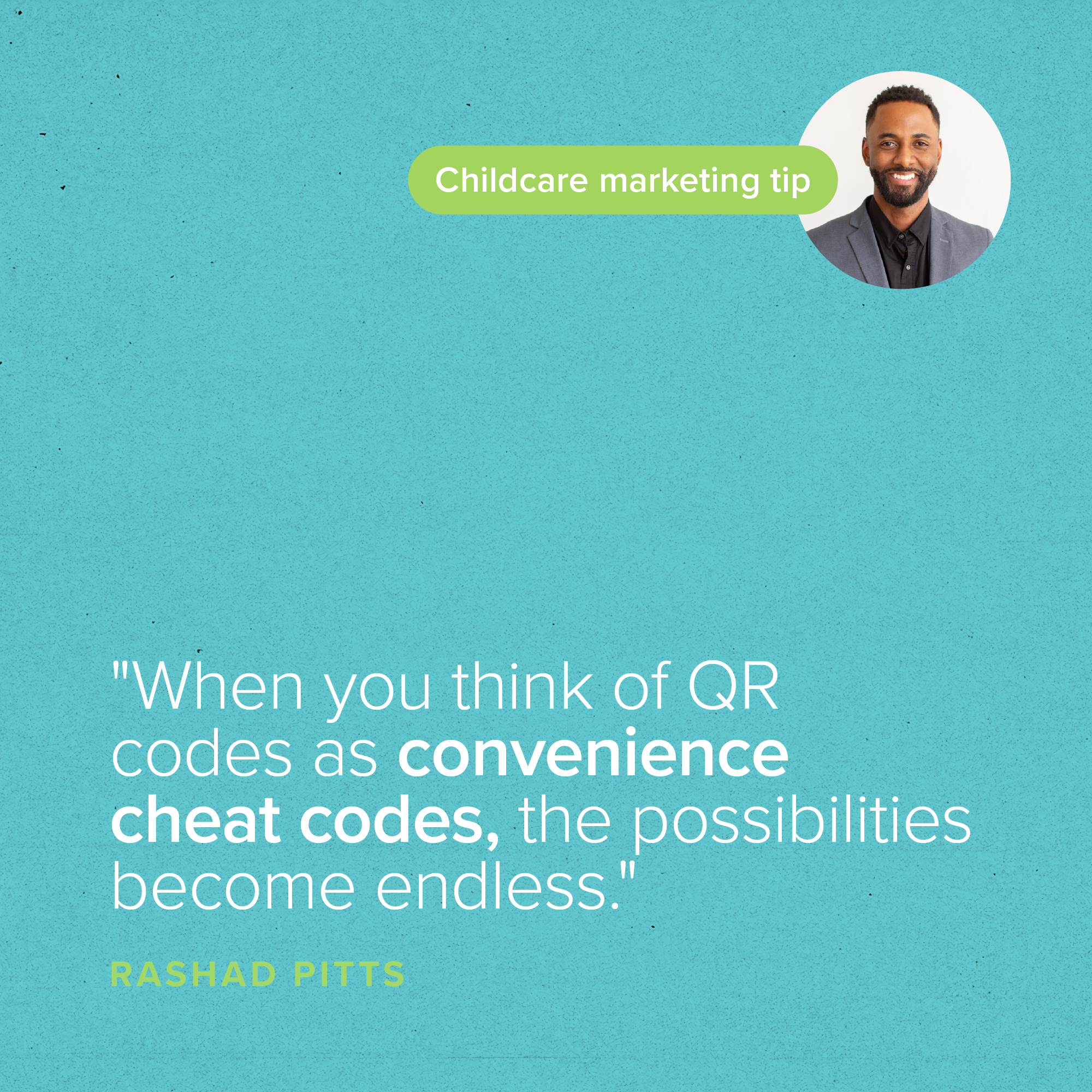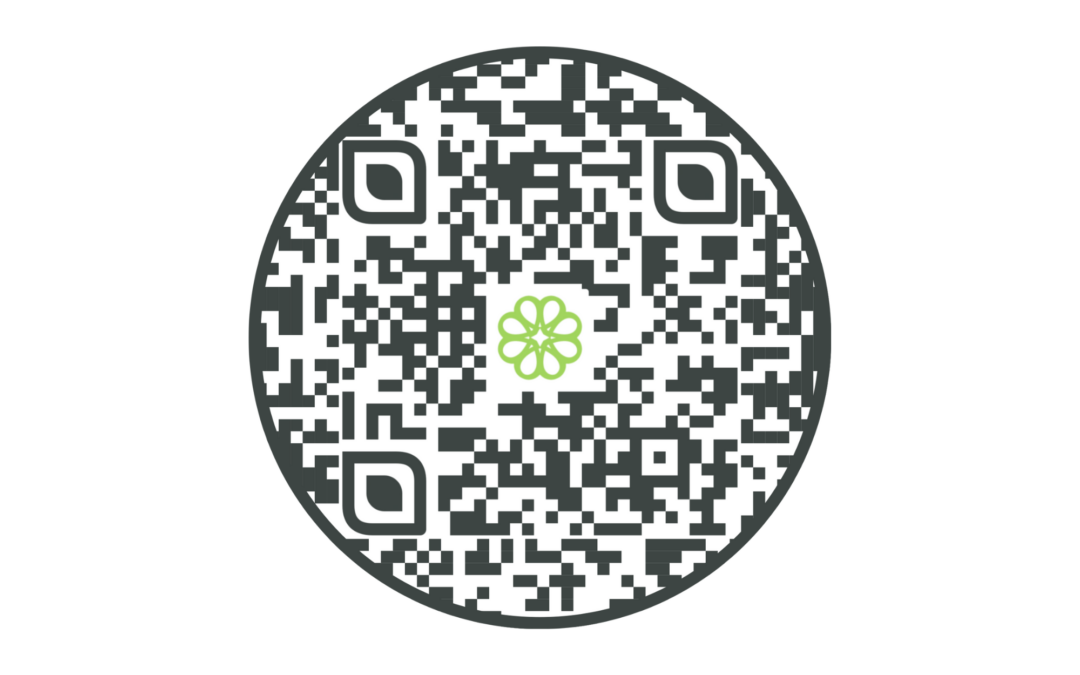To understand whether your marketing efforts pay off, you need to measure your results. Data tells a story, painting a complete picture of how successful your marketing is.
Ignoring your data is like ignoring your finances — it makes better business decisions impossible. If you aren’t comfortable with data analysis, find a partner to analyze your data for you. Your business’s growth depends on it.
Today’s post covers all the ways to collect vital data from QR codes and how QR code analytics can take your childcare business to the next level.
Popular QR Code Uses
The greatest draw of QR codes is convenience. You can leverage them for almost anything if you place them correctly.
In the childcare industry, common placements include:
- Bus wraps
- Front desk stands
- Classroom signage
- Business cards
- Event fliers
- Safety equipment
Each of these QR code placements navigates to a different URL. For example, a QR code on a bus wrap can navigate to the school’s website or a landing page, and a QR code outside a classroom can navigate to a webpage with information about that specific classroom and teacher.
The functions and URLs you can utilize with QR codes are almost endless. Some common applications we use are:
- Review-generation links (to share a family’s experience on social media or Google)
- Refer-a-friend
- Tour stops (program-specific pages)
- Tour booking
- Team pages (meet the teacher)
- Landing pages for special events (sign-up info)
- Special offers (incentives)
- Instructions for safety equipment for your team, contractors, vendors, etc.
- Webinars

The Value of QR Code Analytics
If you only pay attention to how many people scan a QR code, you’re missing the bigger picture. If a code is scanned 100 times, but only two people navigate to your website, what’s the value of those 100 scans?
You need more data to answer questions like, “Did people make it to the URL the code links to?” “How long did they stay on the page?” and “Did they follow the CTA?”
These questions complete your data picture and help optimize your QR code strategy. Do you need to change a code’s placement? Improve a page’s loading speed? Try a different CTA?
You won’t know where to optimize without collecting and analyzing all your data. You’ll be flying blind, and that’s no way to run a business.
As a business owner, your goal is to be memorable, stay top of mind, and provide peace of mind for visiting families. Offer them the best, most convenient experience possible. Answer their questions before they even have the chance to ask them.
QR code analytics is your key to achieving these goals.
Metrics to Track and Use Cases
To best understand your data, use multiple platforms for analysis — QR code analytics, Google Analytics, and more (if applicable).
Remember, the QR code is just the entry point into your sales funnel. It’s the first of several steps you want your visitor to take. By optimizing both your QR code and your sales funnel, you guide your prospects toward enrollment smoothly.
For example, if your goal is to build your email list, your QR code would lead to a form where the prospect fills in their email address and any other necessary information. You would then use this information for initial marketing and retargeting.
However, in order for the prospect to provide contact information, the process must build trust and not feel spammy. When done well and optimized through analytics, each touchpoint improves the customer experience. This leads to more referrals, better reviews, and a stronger business long-term. Again, analytics are the key.
Let’s look at three essential data sets to track as part of your QR code analytics.
Data Set #1: Initial QR Scan Metrics
First, choose a QR code program or software that provides the necessary analytics data. Typically, free QR codes don’t come with analytics, so be careful when using them.
Keep track of the number and location of scans each QR code receives and at what time each code is scanned.
For example, you may place a QR code that leads to Google Reviews outside your school with the intention of having families leave a review while waiting to pick up their children. The analytics for this QR code tell you whether your strategy is effective.
Data Set #2: Customer Information for Marketing and Retargeting
If your goal is to build your email list or text list via QR code, you’ll want to gather email addresses or phone numbers. The code can lead to a form for the prospect to fill out before navigating to a lead magnet like a video, landing page, checklist, etc.
Filling out the form is how they gain access to the destination. The information they provide on that form allows you to market to them and retarget them later on.
Data Set #3: Google Analytics
By using Google Analytics and QR code analytics, you learn where prospects go after they scan the QR code. What pages of your website do they visit? How long do they stay? Do they complete the call to action on your landing page?
The answers to these questions enable you to optimize your sales funnel for a better customer experience and higher conversions.

It’s Time to Think Outside the Box
The goal of marketing is to create a memorable and convenient experience for the consumer. QR codes, and by extension, QR code analytics, do just that. They eliminate annoyances and tackle questions proactively.
Think outside the box as often as possible. For example, you can include frequently asked questions on your website and create QR codes that link to them. Use those FAQ QR codes strategically around your school to show families you anticipate their concerns and care about addressing them.
For most people, QR codes fit neatly inside “the box.” They know what QR codes are and how to use them. But when you think of them as convenience cheat codes, the possibilities become endless.
Subscribe
Sign up with your email address to receive news and updates.

